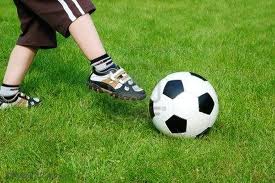Hormones regulate the way we think, do and say just about everything. When it comes to our bodies’ most basic survival ability—eating—one such hormone, known as Leptin, may cause more damage than good.
More research into this tiny little hormone has suggested that a lack of Leptin may be the main cause of obesity. Research also indicates that people who develop a resistance to Leptin become overweight because there’s no signal in the brain telling them that they are satiated.
So if Leptin resistance and depletion are the main causes of obesity, then there are a few important questions we need to ask:
- What causes people to become Leptin resistant?
- Are there methods to reverse the effects of Leptin deficiency and what are they?
- How can we harness this knowledge about Leptin to live a healthy, balanced life?
- What causes people to become Leptin resistant?
If Leptin resistance is the effect, we must analyze the cause if we want to prevent the eventual deficiency of this crucial hormone. Doing so successfully will result in maintaining a well balanced weight and lifestyle.
Strangely enough, the first cause of Leptin resistance is high levels of Leptin. Too much of a hormone can cause the brain to stop responding to it.
Another cause of Leptin resistance is elevated levels of free fatty acids. Eating too much food with free fatty acids causes a disruption in the brain and blocks off Leptin signalling. The Leptin is still there, but the brain doesn’t respond to it.
Too much fructose (fruit sugar) will also cause Leptin resistance.
The final main reason for Leptin resistance is inflammation of the hypothalamus. This is a region in the front of your brain that regulates the nervous system and most of the basic survival functions such as hunger, thirst, sleep, and body temperature. A chemical imbalance in this region of your brain can cause Leptin resistance.
- Are there methods to reverse the effects of Leptin resistance and what are they?
Now that we know the cause of Leptin resistance, we can confidently work on fixing the problem. There are strategies that you can implement in your diet incrementally that will prevent and even reverse Leptin resistance.
- The most important first step to take is to avoid eating carbohydrates as much as you can. There are a number of foods that contain hidden sugar, and these should be identified and removed from your diet.
- Exercising will bring a measure of hormonal balance back to your body and brain allowing it to read the Leptin hormone once again.
- Eating lots of soluble fibre will also bring harmony to your digestive system and reverse Leptin resistance.
- Foods that contain high levels of protein actually increase the Leptin hormone in your body.
- Getting enough sleep will also improve the Leptin in your body.
- How can we harness this knowledge about Leptin to live a healthy, balanced life?
It’s all very well knowing about Leptin, but we must implement this knowledge if we are to benefit from it. The fact is: our western diet may have a lot of variety, but most of the foods we eat are disrupting the hormonal balance in our brains. This imbalance is showing in our society’s growing obesity problem.
The main thing about Leptin is that if the brain doesn’t have enough of it (or if the brain isn’t responding to it), then you will always feel hungry. This hunger usually translates into you eating more of the wrong foods that cause Leptin resistance, and so the cycle continues.
Fixing Leptin resistance and low levels of Leptin isn’t something that can be done overnight. It takes a well balanced strategy to undo the problem and restore the body to optimum health.



















